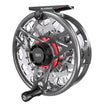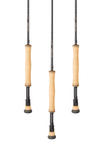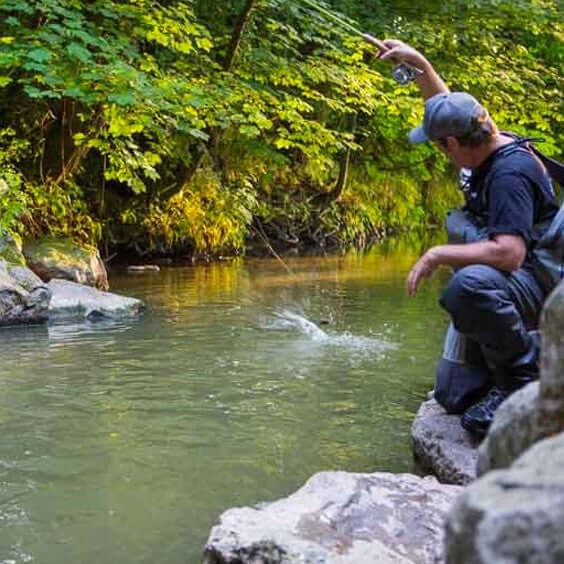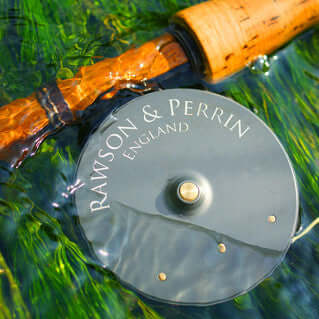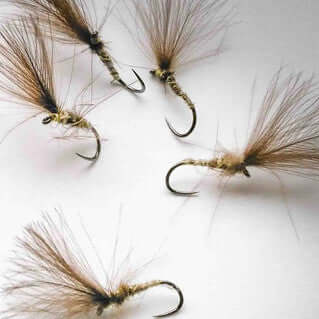
Evening on the River Lostock, Leyland.
I’ve fished in some great places. I’ve hitched size 18 treble micro flies for salmon in Iceland. I’ve swung Sunray’s over white flanked Springer’s on the Spey. I’ve landed giant sea trout in Patagonia and I’ve played hard fighting Grayling in Austria. I’ve fished most of the UK for Rainbows, Browns, Blues, Sea Trout, Salmon, Grayling and whatever else took my fancy. Recently, however, I got the bug to ‘fish where you live.’
It’s an interesting concept. Force yourself to only focus on fishing within say, a 15 mile radius. OK, for some it may be impossible but I reckon that’s the minority. I live near Chorley in Lancashire. Within my 15 miles I have big rivers, small rivers, an estuary and many lakes. All these waters contain game and sea species. Let’s not forget all the coarse species that you can target with the fly too.
I’ve taken this a step further though. I’ve limited myself to a 3 mile radius. In river terms, which is what I’m focusing on, that limits me to the River Yarrow and River Lostock. The Lostock is a tributary of the Yarrow. The Yarrow is a tributary of the River Douglas, which is a tributary of the River Ribble. I could reach into the Douglas, and I probably will at some point, but for now I actually have too much fishing to go at. That statement stands in stark contrast to my mindset over the last 5 years. ‘I have to travel to enjoy my fishing’ I thought. ‘There’s no good fishing round here.’ Not so, it seems.

River Yarrow Lancashire.
Twice a day I drove over the bridge in Croston to look down at the Yarrow, wondering if there were any fish in there. I’ve been wondering this for nearly 15 years! I stopped and looked over to spot a shoal of huge chub, sat there, as they do. Even this wasn’t enough to convince me. ‘Who wants chub?’ I still booked expensive trips to more well known waters.
Until one day last year. I chucked a Sage TXL-F 000 weight 7’9” rod lined with a Sunray World Championship Nymph line in the boot and grabbed a slim box of CdC dries. ‘I’ll take a walk’ I thought.

New friends on River Yarrow.
OK, so straight away you run into issues of who controls the water. I knew who ran the stretch below where I was to recce. I also knew that upstream another club had a stretch. Every attempt at finding out who controlled the water, I wanted to look at, drew a blank. So I just went. I walked down a public footpath and soon came to the bank. I couldn’t believe my eyes. Hidden, in full camo, was a man spinning. Yes! Spinning with a 6’ rod.
This man has a name, Sean. Turns out Sean is no ordinary spinner. Sean transforms spinning in water no more that 18” deep, criss crossed with overhanging and submerged branches, into an art form. His ‘spinners’ are also an art form. Made by his own hands with small, single, barbless hooks. Sean can flick these little shiny lures into any pocket he likes, off either shoulder, under or over the tip of his special little lure rod. If lure fishermen had instructors he’d be a master. He’ll hate me saying this.
It’s also very very effective, chucking these little lures upstream and dragging them back. Pretty soon, Sean had confirmed that there were wild trout present in the Yarrow and quite a few too.
Size is relative. Warning! Deep thoughts.
Finding trout on my doorstep drew mixed feelings. ‘Great, I have somewhere close to home to fly fish for wild trout. Damnn. They are small.’ Typically 4”-8”. Are they small though? When we fished as children these fish were monsters. We just got bigger. I’ve spent my life chasing bigger fish relative to how much I’ve grown and relative to how big the last fish was. If we stop this hamster wheel which has no positive ending. If we grow as people, who appreciate the perspective that nature gives us, we begin to enjoy more. We appreciate the simpler things in life. Our perspective on where we live widens, our egos retreat and the size of the fish becomes irrelevant. It’s the fishing that’s important. Hey listen, there’s still the odd beast to surprise us and that’s a lot of fun, but we dont go for that. We go for all the reasons we first went. To fish. Often with friends.
For me fishing is about being off the beaten track. Yes, Patagonia is very far away but is it off the beaten track? Is Iceland as unfished as I first thought? There aren’t any submerged trees on the Spey. It’s all quite well mannered. I can go deeper. When we were children did we have transport to far off lands? I think there is something very emotive about fishing close to where you live. Close enough to be home for tea. There’s a great scene in ‘Big’ with Tom Hanks where the two childhood friends walk home singing after playing all day. Remember that? You’d go out, play all day and make your way back from wherever you’d found yourself when it was tea time. You were on an adventure but you were also close enough to home. That’s how I feel when I fish close to home. I feel like a boy again. I like it. I have no expectations. I haven’t spent any money and I’ve not used up valuable family time. I literally having nothing to lose. It’s often spontaneous and often in the best conditions. All the best parties are unplanned right?
Needless to say Sean and I became friends and we started to share information on who controlled what pieces of water and which water was best. That’s how I found out about the Lostock. Our first outing to the Lostock was one I’ll never forget. On these small little streams, you can’t pull a fish up to a dry. They have to be rising already. Sean catches lots of fish to different types of lures but picking them off with dries is much more considered. So, Sean and I fashioned a way of leapfrogging each other’s pools, fishing upstream as we go. It maintains the social aspect of fishing and gives suitable pieces of water to the respective angler. Nothing rising, plug away. The slightest hint of a rise, step aside Sean, it’s dry time. It’s a good way to fish.
Tim Burton trees.
This night, Sean and I came round a bend to find a fish sipping something from the surface, right next to a submerged branch. This is typical ground for these small stream trout. The more tangled the water, the more fish you will find. And so it was, just one fish rising. As per the unwritten rules, this was my fish and Sean stepped out of the way. I hooked the fish and both of us were astounded at the size of it. We both agreed a 2lb wild brown trout had seized my size 19 plume tip and was cavorting around a tiny river that looked like it had been designed by Tim Burton. The size of the fish in relation to the stream took me completely by surprise and the fight was proportionally like fighting a tarpon in the jungle. Needless to say the trout won. It colluded with a Tim Burton’esque submerged tree and that was that. That was the moment the penny dropped. I don’t need to travel to far off lands. I need to appreciate what I have.

Next session, River Yarrow again, Sean and I decided to fish a stretch that looked more suitable for the fly, underneath the M6! Keen to convert Sean, we took one glass fibre fly rod and a camera. Sharing a rod is another thing I like to do when fishing nowadays. I first did it in Iceland and it made the trip to be honest. It’s sociable. It creates a team mentality and it means that your friend is there to share the drama. Catching fish, losing fish, falling in, snapping rods, all the things that happen as a consequence of fishing. It also means the other person can take pictures if you enjoy that. I’ve invented a little sub urban fishing game. ‘Make your pictures look like International waters and surprise social media with their real location.’ It’s surprising how photogenic these little urban streams can be in the right light. Throw in interesting gear and the small urban stream photo shoot can look really cool.

River Yarrow in evening light. One on a nymph.
What about tackle?
Being involved in the tackle industry the trend is heavily towards lighter gear. It’s the biggest movement in fly fishing in 30 years. My own personal opinion? The trend for lighter lines, softer rods and wilder fish is more impactful than any advances we’ve seen recently in carbon fibre. In fact, the trend is for cane, glass and even linen.
I just spent a week with a major manufacturer designing a range of carbon rods. The joke was that my feedback was always ‘softer, softer in the mid section.’ Sure, fast carbon rods have their place but often their place is misunderstood. Here’s the wild trout gig; the lighter the tippet we can use, the more natural our flies will behave, the more likely they are to be taken. Let’s follow that tippet backwards. The line it’s attached to will need to be thin too or the balance between the tippet and line will be affected. So we need a very thin fly line for our very thin tippets. Enter stage left, Sunray micro thin fly lines. There’s the plug.
The benefit of a thin fly line is an entire dissertation on it’s own and this is not the place. The rod must be soft enough to not break the tippet or pull the hook out of the fishes mouth. The latter point is the most important. The strength of 0.10mm Stroft for example, is surprising when you have the correct rod attached to it. In this article I borrowed an Epic glass rod from friend Chris Aldred. It’s an 8’ #4. Normally I’d have to use a #2 or #3 carbon rod but the forgiving nature of glass protects the tippet. Ideally I’d be using a 7’ #1 soft action rod, either in cane, glass or carbon; even linen.

Glass fibre. Protect your hook hold.
The point is that it must be soft enough to protect hook holds but fast enough in the tip to create tight loops.You need to hold 30’ of line off the water in a sidecast to slide under branches sometimes inches off the water. The Italian style of under lining rods and casting is also something to consider for this super accurate style of casting. Not my thing, but there, and there for a reason.
If you’re still wondering who makes linen rods, Gary Loomis Edge are the company trialling this new material. In terms or modern, intelligent cane rods, Rawson and Perrin in the UK are the go to company. Glass rods? Steffen Brothers in the States are fantastic. Epic glass rods are lovely too. Sunray are making a range of short carbon rods with the action of glass and aesthetic of cane. The fun factor of using rods with feel is very real. The performance, in terms of landing fish, cannot be argued with. These new softer rods also look great, often with a retro feel.
Dries or Nymph? What about a lure, no one’s watching!

Stuart Crofts and Tom Bell. The elastic band trick.
Flies I use are 90% dries. My personal favourites are plume tips, f-flies and something else a Serbian angler tied for me. I dont know it’s name but it has CdC. Here’s a tip shown to me by Stuart Crofts recently. Take an elastic band tied to your vest. Put a wet CdC fly in one end of the band, stretch and twang like a guitar string. The twang sheds the water from the feathers and fluffs it up all nice. Great little trick. You’ll spot anglers in the know now with little elastic bands hanging from their person. It’s really important to focus on these details. If the fly isn’t floating as it has been designed, chances are it won’t be taken. If you use one of those heavy butted, shop bought tapered leaders and a thick fly line, the fish will spook. However, these wild trout have seen very little pressure so when they take, they often take with passion.

Dry fly, glass rod and micro thin fly line.
The depth of water is often so shallow that heavy nymphs aren’t required. On our recent trip, under a bridge carrying the M6, we found a man made channel forcing water through into what looked, for all the world, like a river in New Zealand. It was made to look even more like New Zealand or Austria by a strange white colour to the river, which got whiter as the night went on. It was perfect for the heavier nymph. Off came the dry and on went a single PTN bead head. First drift and a trout was on. Proof these fish will find cover, whether under logs, undercut banks or under broken water. A tiny hook hold brought this fish to the net, aided by the light tippet, thin fly line (doesn’t drag in water) and the soft, glass fibre rod. If it was a fast or even medium fast carbon #4 rod, that fish would have been lost.
The success Sean has with his little lures cannot be argued with. If you are so inclined, try a little lure of some kind and strip it back, after casting upstream, into the unlikeliest little pockets of darker water. Some big trout can suddenly appear from these lairs.
The Sequel.
On that subject, I returned to the ‘lost 2lber’ stretch without Sean. I took my Sage #000 (insanely soft rod) and my 0.55mm level floating micro thin line. With 5’ of 0.10mm stroft as leader and a size 21 plume tip in 10” of water, I saw a rise. I worked my way up to it, lay my fly down and watched. A chub made it’s way towards the fly. From nowehere, out of blackness, launched something. It chased the chub away, spun and targetted the dry like a laser guided missile. I’m watching this play out in front of me like a video game. Bang! This fish nailed the dry and took off downstream towards the Burtonesque tangle of exposed branches. ‘Chub!’ I thought feeling dissapointed. As it sped past my ankles (which it did, taking the tip of the rod with it) I noticed the spots. Isn’t it interesting how the game changes when you know it’s a big trout? Yeah yeah, I know I got all soppy about being boys and catching tiddlers but even boys hook real monsters, and so had I.

The monster.
The rod being rated a #000 weight was bent 3/4 circle, through my legs. The butt was pointing upstream and the tip was travelling downstream absorbing all the shocks of this 2lb wild trout in ankle deep water. The fight was truly incredible. Real close quarters battling. Leaping and cartwheeling with explosive bursts of speed that reminded me of bonefish. With only 10” of water to fight in, where does a wild fish go? Cover, that’s where.
Having fought this fish before I knew the root system where he bolts to. I put what felt like an impossible amount of pressure on him, pulling him away from the tangle of roots. I waited for the light tippet to snap. Surely it would snap, the rod was almost a full circle. I had to hold the rod half way up the bank to get the leverage I needed. The tippet held as the nose of the fish stopped inches from it’s destination. The soft rod took all the impact from the 0.10mm Stroft and finally he came to the net.
I felt like I had landed a 30lb Springer in Norway. Alone, I burst out laughing at the drama of it and with shaking hands took a quick iphone pic before releasing him. What an experience! It felt like the fight was truly equal. He had all manner of cover to escape to and I had the lightest fly fishing outfit currently on the market. Using light lines, soft rods and barbless hooks is kinder to the fish. I’ve found that to be true for many many years now. He swam away as though he was still in the fight. Zoooommmmmm! Back into the black shadows underneath the overhanging bank. Heart pounding for sure, but still full of vitality.

Wild Brownie from River Lostock.
You know when you’ve had a truly great fish when you pack up and go home. How could you follow that? Why would you want to follow that? You don’t need to follow that. It’s tea time anyway. You can come back tomorrow, and the day after and the day after. It’s on your doorstep and it’s part of who you are. I think of the tackle I make as being toys for grown ups. I think of the places I fish as adventures. I like fishing with people who dont take it seriously and I like fishing close to home. Like the two boys in ‘Big’ singing and dancing their way home, in time for tea. It’s great. Fishing how it should be. Fun.
This article is about finding ways to put the fun back into your fishing. Fish lighter gear, softer rods and try different materials to carbon. Fish a micro thin line and find places to fish that look like no one is interested. Get home in time for tea and save your cash for something else, perhaps a toy rod for your son or daughter. Anything to get them off the Ipads. Tight micro thin lines.
[upsell title="Tom used these on the Yarrow" limit="6"]fish-where-you-live[/upsell]






